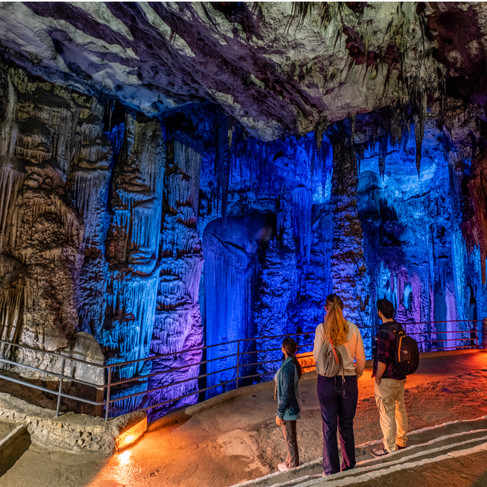Beauty and fantasy are hiding in Majorca’s underground
- Representation Plus

- Aug 31, 2021
- 3 min read
Formed over thousands of years, Majorca’s caves are some of the most beautiful in the world; and with more than two hundred of them, the island’s depths are one of Majorca’s greatest attractions. Thanks to its geological richness, the island’s subsoil is home to many caves where stalactites and stalagmites have developed jaw-dropping shapes over centuries. Five of these caves are open to the public and they are some of the island’s most visited attractions.
In the northwest of the island, located inside a cliff close to the beach of Canyamel, the Artà Caves are accessible through a majestic natural entrance. They are some of the highest caves in Europe, formed by stalactites of prodigious shapes and extraordinary proportions hanging from a vault. The 'Queen of Columns' will amaze visitors with its 22-metre height. Explorers will also be able to experience 'The Inferno'; a path lined by diamond shaped carbon stones which features a light and sound show.
One of the largest underground lakes in the world can be found in the Drach Caves. Lake Martel is 117 metres long, 30 metres wide and 14 metres deep. Boat tours are available and the setting is sometimes used as a stage for music concerts. However, these caves, located in the municipality of Porto Cristo, do not only stand out for their beautiful lakes; their spectacular lighting is another high point for any visitors, thanks to the creation of Catalan light engineer Carles Buigas, known as 'the magician of light'.
Also located in Porto Cristo, the Hams Caves are 500 meters long and they are named after their arborescent formations, reminiscent of fish hooks which are the result of currents and the work of spiders. They were discovered by the Majorcan speleologist Pedro Caldentey in 1905 and, like the Caves of Drach, they host a lake popularly known as the “Sea of Venice” where visitors can enjoy a classical music concert held in an illuminated boat.
The Campanet Caves are admired for the whiteness and thinness of their exuberant stalactites and stalagmites. They are made up of numerous galleries in limestone from the Mesozoic era and they are of great scientific interest. Not only are they home to native cave insects, but they are also the resting place of the Myotragus Balearicus paleontological remains; an animal related to sheep that became extinct 5,000 years ago.
Located in Palma and 36 metres deep, the Gènova Caves contain a feature that sets them apart from the rest: magnesium-based rock formations called “coraloires” which are thought to be around 4 million years old. A dream come true for any potholers…
-ENDS-
For further information, images or to set-up an interview or press trip contact:
Amy Layton
Representation Plus
Email: pr@representationplus.co.uk
Mobile: 0776 816 2683
Telephone: 0208 877 4500
Website: www.infomallorca.net/?lg=en
The Majorca Tourism Foundation, responsible for the promotion of Majorca as a tourist destination, is a 100% public, non-profit entity and part of the Conseil de Mallorca, the island's governing body. It aims to encourage the promotion of the island to national and international markets, as well as create new tourist products, manage tourist services in general, and any activity that aims to promote tourism on the island. Among the main activities that the foundation carries are the organisation and participation in national and international meetings positioning Majorca's brand as an audiovisual set and film tourism destination.










